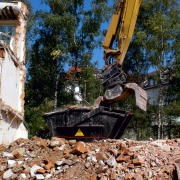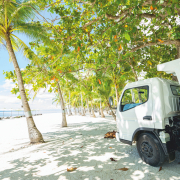Curbside Collection Improves Organic Waste Composting
Composting food and garden waste instead of sending it to landfills can significantly reduce methane emissions and help mitigate global warming. That is the result of a study from the University of Illinois Urbana-Champaign, which explored the effects of curbside compost collection programs in New South Wales, Australia.
“Governments around the world are interested in composting organic waste and reducing their methane emissions, and they are looking for ways to make waste collection more convenient for households. As municipal composting services were being rolled out in Australia, we wanted to measure how these policies affected household waste disposal behavior,” Becca Taylor was quoted; she is an assistant professor in the Department of Agricultural and Consumer Economics, part of the College of Agricultural, Consumer and Environmental Sciences (ACES) at Illinois.
Between 2009 and 2015, 24 local government councils in New South Wales (Australia’s most populous state) adopted curbside services to collect food and garden waste for recycling into compost. “Households received a red bin for general waste, a yellow bin for recycling, and a green bin for organic waste”, the information said. “Information campaigns educated people on the types of waste allowed in the bins, and some councils provided small kitchen caddies to make waste sorting easier.”
Taylor and co-author Lihini de Silva from Monash Business School (Australia) analyzed household waste data from annual New South Wales government waste and resource recovery reports from 2008 to 2015. “We had access to data for all three curbside waste streams: landfill, recycling, and the newly added compost, so we could see spillover and linkages between them,” Taylor stated. “We found the programs were very successful in getting organic waste out of the landfill. On average households redirected 4.2 kilograms of waste to composting, which represents 25 percent of the waste that previously went to landfills.” In some areas, people could put food scraps and garden waste in the green bins, while other areas only allowed for garden waste. When the researchers compared the two types, they did not find large differences in quantities, which suggests most of the compost came from garden waste.
Based on the Australian data, Taylor and de Silva estimated that moving a ton of organic waste from landfill to compost would result in six to 26 percent reductions in methane emissions. They noted these results could vary for other locations because calculations are based on the specific compost and landfill technologies that are used.
“We also wanted to see if composting affected other recycling or waste amounts. It could go either way – people could be reminded to recycle other waste as well, or the additional time and effort could result in less general recycling. Another concern was whether giving people an extra bin would increase the total amount of waste,” Taylor was cited. “However, we did not find significant effects on recycling rates, so it’s not crowding out other recycling, but also not encouraging it. We also found no effects on the total amount of waste.”
Methane traps heat in the atmosphere around 30 times more effectively than carbon dioxide. It remains in the atmosphere for a much shorter amount of time, so reductions in methane emissions have a more immediate impact on reducing global warming. Landfills are the third largest source of human-related methane emissions, after fossil fuels and livestock. Composting organic waste instead of sending it to landfills provides an important and low-cost way to reduce methane emissions, the researchers explained.
“These compost collection programs facilitate methane emission reductions without reducing the amount of waste. This underscores that recycling is important, but generating less waste in the first place would result in even greater emission reductions. Both measures are important elements of sustainable practices,” Taylor concluded.
(Published in GLOBAL RECYCLING Magazine 2/2024, Page 24, Photo: Landratsamt Kitzingen studio zudem / abfallbild.de)









